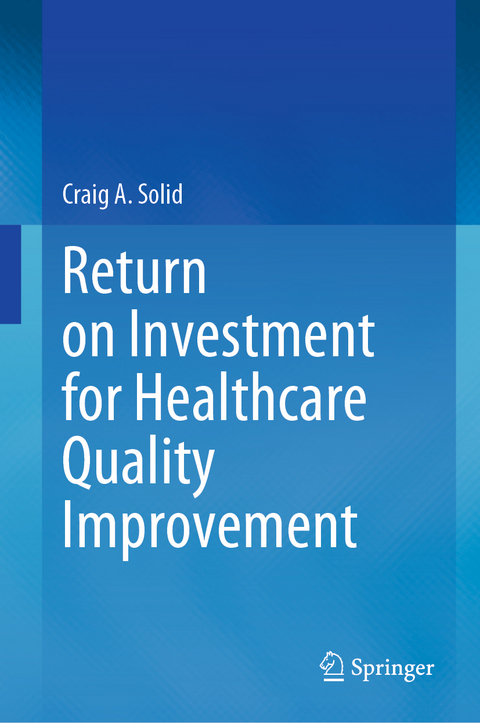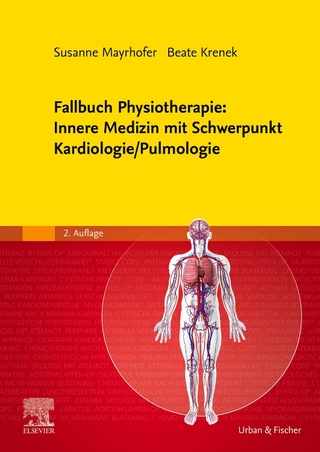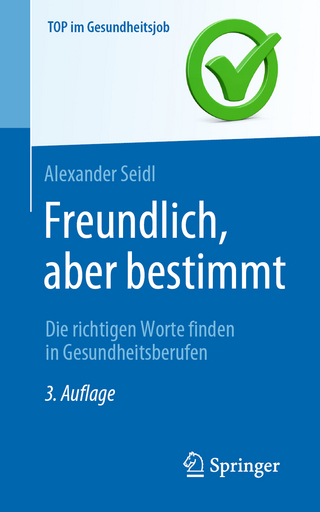
Return on Investment for Healthcare Quality Improvement
Springer International Publishing (Verlag)
978-3-030-46477-6 (ISBN)
Chapters describe the general framework for how to perform QI; establish standard definitions of important terms, concepts, and calculations; and provide specific instructions for how to complete each step of an ROI analysis. These include: selecting a QI initiativeand identifying the associated metrics, establishing measurable, monetizable, and attributable costs and benefits, determining the appropriate scope and perspective, calculating ROI and related metrics (payback period, benefit-to-cost ratio, etc.), comparing with established benchmarks or previously published results, and interpreting the results for the intended audience. In addition, chapters offer examples of real studies (or hypothetical studies of real situations), as well as templates for several of the necessary activities that readers can leverage for their own use.
Return on Investment for Healthcare Quality Improvement is a must-have resource for healthcare providers, administrators, and other professionals who work in healthcare organizations, hospitals and other healthcare settings, health systems, and residency programs seeking to obtain outside funding, as well as policy makers and administrators of federal programs.
Craig A. Solid, PhD , is a health services researcher and consultant who is owner and principal of Solid Research Group, LLC. Due to his expertise in the measurement and assessment of healthcare quality and value, and familiarity with federal quality initiatives and the evaluation of health policy and reimbursement, Dr. Solid helps healthcare organizations to navigate the complex world of data and measurement related to healthcare quality and research. His training as a statistician and economist allows him to effectively convey complex analytic and clinical concepts to a variety of audiences. Dr. Solid has given seminars and guest-lectures on analytic methods related to continuous quality improvement (control charting, etc.), the process of calculating the return on investment (ROI) for quality improvement, and the steps required to write and format peer-reviewed manuscripts for journal submission. He has co-authored over 50 peer-reviewed manuscripts and has presented work at numerous national and international conferences.
Chapter 1. Introduction.- Chapter 2. Planning an ROI Analysis.- Chapter 3. Initial Steps.- Chapter 4. Costs and Benefits.- Chapter 5. Performing Base Case and Sensitivity Analyses.- Chapter 6. Interpretation and Presentation.- Chapter 7. Hypothetical Case Studies.- Chapter 8. Tips and Templates.- Chapter 9. Expanded Topics in ROI.
| Erscheinungsdatum | 11.06.2020 |
|---|---|
| Zusatzinfo | XIII, 263 p. 45 illus., 6 illus. in color. |
| Verlagsort | Cham |
| Sprache | englisch |
| Maße | 155 x 235 mm |
| Gewicht | 577 g |
| Themenwelt | Medizin / Pharmazie ► Gesundheitsfachberufe |
| Medizin / Pharmazie ► Gesundheitswesen | |
| Medizin / Pharmazie ► Pflege | |
| Schlagworte | cost-benefit analysis of healthcare quality • cost-effectiveness of healthcare quality • economic estimation of quality improvement • Health Administration • Healthcare Management • healthcare quality and safety • Health Economics • health services research • how to estimate costs and benefits for QI • medical quality • monetary value of health care • monetary value of quality improvement • public health management and practice • quality improvement (QI) • Return on Investment (ROI) • ROI for health care • ROI for quality improvement • value of quality initiatives |
| ISBN-10 | 3-030-46477-6 / 3030464776 |
| ISBN-13 | 978-3-030-46477-6 / 9783030464776 |
| Zustand | Neuware |
| Informationen gemäß Produktsicherheitsverordnung (GPSR) | |
| Haben Sie eine Frage zum Produkt? |
aus dem Bereich


